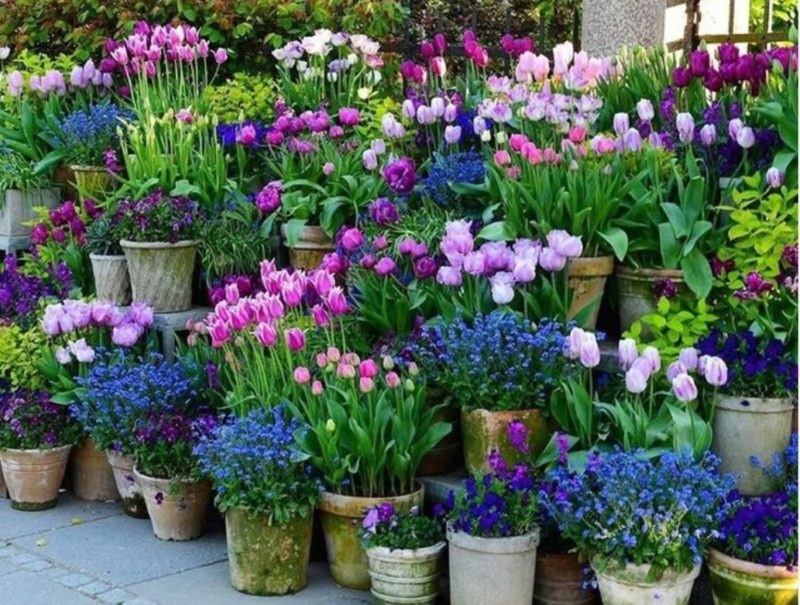Container gardening is a popular and convenient way to grow plants, flowers, and vegetables, especially in limited spaces such as balconies, patios, or small yards. It allows individuals with no access to a traditional garden to still enjoy the benefits of gardening and beautify their living spaces. Whether you are a beginner or an experienced gardener, these container gardening tips will help you create a flourishing and delightful container garden.

Container Gardening Tips, Choosing the Right Containers
Selecting the appropriate containers is crucial for successful container gardening. Ensure your pots have drainage holes to prevent waterlogged roots and provide adequate oxygen to the plant’s roots. Opt for containers made of materials like plastic, terracotta, or ceramic, as they offer good moisture retention and breathability.
Selecting the Right Plants
Different plants have varying needs and preferences, so it’s essential to choose suitable varieties for your container garden. Consider factors like sunlight exposure, climate, and the container’s size when selecting plants. For beginners, low-maintenance plants like herbs, cherry tomatoes, petunias, or succulents are excellent choices.
Quality Potting Mix
The next container gardening tips are quality potting mix. Invest in a high-quality potting mix rather than regular garden soil, as it provides better drainage and aeration. Look for mixes specifically formulated for container gardening, as they often contain a blend of peat moss, vermiculite, perlite, and nutrients that promote healthy plant growth.
Watering
Container gardens require regular watering, especially during warmer months. Check the moisture levels regularly and water when the top inch of the soil feels dry to the touch. Avoid overwatering, as it can lead to root rot and other plant health issues.
Fertilizing
Since container plants rely on limited soil nutrients, it’s essential to fertilize them regularly. Use a balanced, water-soluble fertilizer to provide your plants with the necessary nutrients. Follow the manufacturer’s instructions and avoid over-fertilizing, as it can harm the plants.
Sunlight
Most container plants thrive in full sun or at least 6-8 hours of direct sunlight per day. Place your containers in areas where they receive sufficient sunlight, and be mindful of the changing sun patterns during different seasons.
Pruning and Deadheading
Regular pruning and deadheading help maintain the shape and promote new growth in container plants. Remove faded flowers and trim leggy or damaged stems to encourage healthy and bushier growth.
Pests and Diseases
Keep a close eye on your container plants for signs of pests or diseases as the next container gardening tips. If you notice any issues, take immediate action to prevent further damage. Use organic pest control methods whenever possible to avoid harmful chemicals.
Rotate and Rearrange
To ensure even growth and prevent plants from leaning towards the sun, rotate and rearrange your containers every few weeks. This will help each side of the plant receive equal sunlight exposure.
Winter Care
In colder climates, protect your container plants from frost by moving them indoors or to a sheltered location. Alternatively, use insulating materials like burlap or bubble wrap to safeguard the roots during freezing temperatures.
Container gardening can be an incredibly rewarding and enjoyable experience. By following these container gardening tips, you can create a stunning and thriving container garden that brings joy and beauty to your living space throughout the year. Happy gardening!